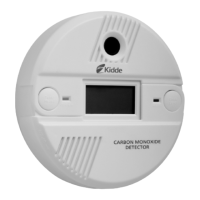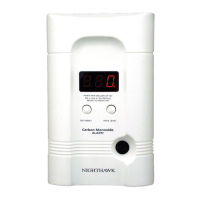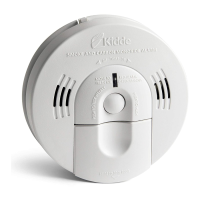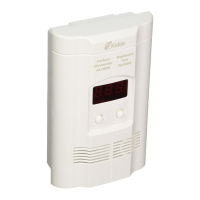21
What is Carbon Monoxide?
Carbon monoxide (CO) is an odorless, colorless, poisonous gas created when any
fuel is burned – gasoline, propane, natural gas, oil, wood, coal, and even tobac-
co. When combustion air is limited, more CO is produced. Serious problems can
develop when combustion by-products are not properly vented outside the
house.
You’ve probably heard about carbon monoxide poisoning in the news recently.
It’s a problem receiving more attention because groups like the American Lung
Association and the Consumer Product Safety Commission have made it a prior-
ity to warn the public about the dangers of this deadly household poison.
What are the Effects of CO Exposure?
When you breathe carbon monoxide, it enters your bloodstream through
your lungs and attaches to red blood cells. These red blood cells, called
hemoglobin, carry oxygen throughout your body. Carbon monoxide mole-
cules attach to the red blood cells 200 times faster than oxygen, preventing
the flow of oxygen to your heart, brain and vital organs. As carbon monox-
ide accumulates in your bloodstream, your body becomes starved for oxy-
gen. The amount of carbon monoxide in a person’s body can be measured
by a simple blood test, called a “carboxyhemoglobin level” test .
The early symptoms of carbon monoxide poisoning are often mistaken for
the flu – headache, dizziness, weakness, nausea, vomiting, sleepiness, and
confusion.
Could Your Family be at Risk from CO Poisoning?
Carbon monoxide is the number one cause of poisoning deaths in the
United States. According to the Mayo Clinic, at least 10,000 Americans are
affected by CO poisoning each year.
While anyone is susceptible, experts agree that unborn babies, small chil-
dren, senior citizens and people with heart or respiratory problems are
especially vulnerable to CO and are at the greatest risk for death or serious
injury.
Where Does CO Come From?
Inside your home malfunctioning and improperly vented appliances used for
heating and cooking are the most likely sources of carbon monoxide. Vehicles run-
ning in attached garages can also produce dangerous levels of carbon monoxide.
A by-product of combustion, carbon monoxide can be a potential problem from
a number of common sources – automobiles,
furnaces, water heaters, fireplaces, wood stoves, charcoal grills, gas ranges, space
heaters and portable generators.
Carbon Monoxide Safety

